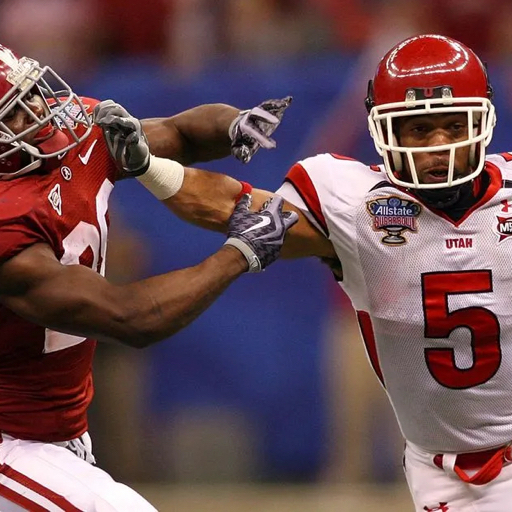Ranking total NIL spend
Welcome to Ute Hub › Forums › Utah Utes Sports › Football › Ranking total NIL spend
- This topic has 17 replies, 8 voices, and was last updated 1 year, 5 months ago by
 The Miami Ute.
The Miami Ute.
-
AuthorPosts
-
-
 MDUteParticipant
MDUteParticipantHere’s what I saw posted. Not sure how accurate it is but I imagine it’s in range with what schools’ collectives are spending.
For comparison, I have a close connection to an insider who heads up our Crimson Collective. And he shared that Utah was at $7.5M of NIL this year. A big portion of this is used just for retainment of current players, with Cam obviously being the biggest chunk at $1.5M.Yet Oregon is not at the top of the NIL when it comes to NIL compensation.
P5 NIL Team Rankings (from on3): 1 – Texas $19.9 mil2 – Alabama $16 mil3 – tOSU 13.6 mil4 – USC 13.5 mil5 – Georgia 13.4 mil6 – Colorado 12.3 mil7 – Michigan 11.6 mil8 – Oregon 11.6 mil#GoDucks https://t.co/aBxGcJSJxs pic.twitter.com/LHWAHCAETP
— DP (Dustyn) (@UODiehard86) February 7, 2024 -
NorthernUte
ParticipantI think a chunk of Cam’s is contingent on wins as well if I am not mistaken. Like the most he could make is 1.5, I read an article about it a while back I thought
-
 MDUteParticipant
MDUteParticipantI read that as well and I am not sure how his deal is structured. But I was told $1.5M of the total $7.5M was attributed to Cam.
I was surprised to learn our donors had increased to $7.5M which seems pretty good for Utah. I think the goal for our program would be to get to $10M+ in NIL.
I saw another breakdown that showed what the blue chip recruits, including transfers, are getting. Outside of QBs which are in the 7 figures, the 4* and 5* players (depending on position) are getting anywhere from $300K – $1M. It makes it really hard for Utah to continue bringing in 4* talent like last year’s recruiting class (10 4* recruits) at the current level of NIL where roughly $4.5M is needed just to retain our proven talent, leaving only $3M to attract new dudes.
-
-
 BrettskiParticipant
BrettskiParticipantNIL is ruining the sport
-
 EagleMountainUteParticipant
EagleMountainUteParticipantWhat’s the difference? Money in the hands of kids or the school? Is it so upsetting to you that programs pay kids openly now? Compared to how much money the school makes it is chump change as well.
Personally I wish a reckoning would come for these college schools. Tuition and endowments is ridiculous. Also Colleges don’t actually teach you much of anything anymore relevant to building better people for society.
-
 StoneParticipant
StoneParticipantThese are not the schools paying the players, it is donors. You can make the case that the donor money would have gone to the school if not to the player, but that is speculative. I would actually prefer the schools be the ones paying the players, since it is the schools that are gaining revenue from the ticket and broadcast right sales. It makes more sense for that sharing to occur. It also would make it so that the players are able to be fired and expected to play in games (when not injured), so there is none of this “opt-out” of bowl games.
If college athletes are going to be paid, professionals, then they should get contracts and abide by those terms. NIL is this odd land where boosters are expected to pay players for the school’s benefit – boosters then get to theoretically have the players they pay do some advertisements, etc. But that is just a facade. College sports is a broken marketplace.
-
 EagleMountainUteParticipant
EagleMountainUteParticipantI did misstate or vaguely state my point. I think it stands to reason this money would be donated to the school in some capacity or my assumption it is done under the table as has been done for years and years prior to this.
The fact that it is paid in this matter is far better in my view. I don’t see it as the death of college football.
I agree it is broken. Only because of decades and decades of abuse. If you unionize players and make them employees of the State this will kill football and college athletics for many programs.
-
 The Miami UteParticipant
The Miami UteParticipantIf you unionize players and make them employees of the State this will kill football and college athletics for many programs.
Absolutely GD right. What a lot of people fail to understand is that with the exception of football, at some but not all schools, and MBB, again at some but not all schools, college athletics operate deeply in the red. No university that’s already losing money on its athletics programs is going to sign up for making athletes employees of the school.
If this ruling where the Dartmouth MBB team was found to meet all of the benchmarks of being university employees becomes viral and goes nationwide, expect big time, organized college athletics to disappear for the vast majority of schools. You’ll still have sports teams at most universities but it’ll be at the intramural or club level. Essentially, you’ll have students playing sports instead of athletes going to class.
-
 2008 National ChampParticipant
2008 National ChampParticipantIt shouldn’t be overlooked that there is a majority on the academic side at most universities who believe that athletics waters down the mission. The prospect of turning athletes into employees may just be the cudgel they need to shut down athletic departments.
The entry requirements for athletes is universally lower than it is for the greater student population at each school which has long been a bone of contention for the ivory tower types.
-
 The Miami UteParticipant
The Miami UteParticipant^^^^This^^°°
To me, there’s no doubt that there’s a significant number of administrators, deans, professors, that would have zero problems getting rid of college sports in general. There’s a huge undercurrent of resentment and jealousy amongst academicians about the outsized role that sports play in the day to day existence of major universities.
-
-
 StoneParticipant
StoneParticipantIt seems like this is the way things are going. Nearly all college sports go back to their origins as club/intramural activities. Then the revenue producing teams break off as stand-alone professional entities with a licensing agreement with the corresponding schools. Those entities form a league (essentially, NFL minor league). It seems inevitable.
-
 The Miami UteParticipant
The Miami UteParticipantI completely agree. I posted something almost exactly the same a while back and used the example of various professional soccer teams in Latin America. There are a number of teams whose name is Universidad XXXX but are completely professional entities.
-
-
-
-
-
-
 EagleMountainUteParticipant
EagleMountainUteParticipantI will say when they change the schollies to 100 that is when you will start to see it ruining the sport. Only so much talent to go around. P2 schools will soak up that much more talent.
-
 2008 National ChampParticipant
2008 National ChampParticipantwhen it goes to P2, why would those schools limit themselves to only 100? Their concern at that point will not be propping up the schools that were left behind
-
 EagleMountainUteParticipant
EagleMountainUteParticipantAgreed. Probably habit of mine calling them scholarship students. I think most likely they would just be unionized employees of the university. They would probably set a limit and 100 is what I heard being floated around. It think it is to make it seem fair to the Universities not spending as much as the blue bloods.
Also it was previously stated that contracts would prevent the employees from sitting out games or bowls. That could take place but the Players Union would negotiate an out I am sure.
-
 The Miami UteParticipant
The Miami UteParticipantBig-time schools are already getting around scholarship limits by having NIL donors pay for selected athletes. Theoretically, you could have a 200 player roster provided that only X amount were on scholarship.
-
 2008 National ChampParticipant
2008 National ChampParticipantYep, back to the good old days of the 50’s – 70’s where the big schools routinely had close to 150 “scholarship” athletes.
-
-
-
-
 UteNamedOgParticipant
UteNamedOgParticipantJoel Klatt had an excellent monologue on NIL, see below. I think athletes getting paid is a good thing, with pros outweighing cons; example being the outreach that the Crimson Collective does with charities, and players staying longer in college, not feeling pressured to leave so they can support themselves, family, or friends. Micah Bernard hitting a bump in the road on a scooter is much different than Micah Bernard hitting the same bump in a vehicle. That being said, the NCAA seems to be doing everything it can to take the longest possible route towards a serious relationship between itself and the NFL by pretending that everyone’s a student athlete, instead of restructuring profitable sports to resemble semi-pro leagues.
Prefacing this by saying I know very little, and that this is a hypothetical perfect world built upon what I know, but I would LOVE to see a system where these obscenely gifted high schoolers come into college and sign a contract that gives them insurance, structure, and a safety net, then lets them focus on their sport. From a personal perspective, I think it would be better for them to have “x” amount of time to finish a degree when they’re able to focus on said degree. College at 18 is already hard. College when you’re Drew Allar at Penn State studying for midterms AND a game against Ohio State on national TV in front of 100,000 fans is nearly impossible. (Big shout out to the Bryson Barnes and the other Lowe’s walk-on’s of the world for doing what I definitely could not)
-
-
-
AuthorPosts
- You must be logged in to reply to this topic.
